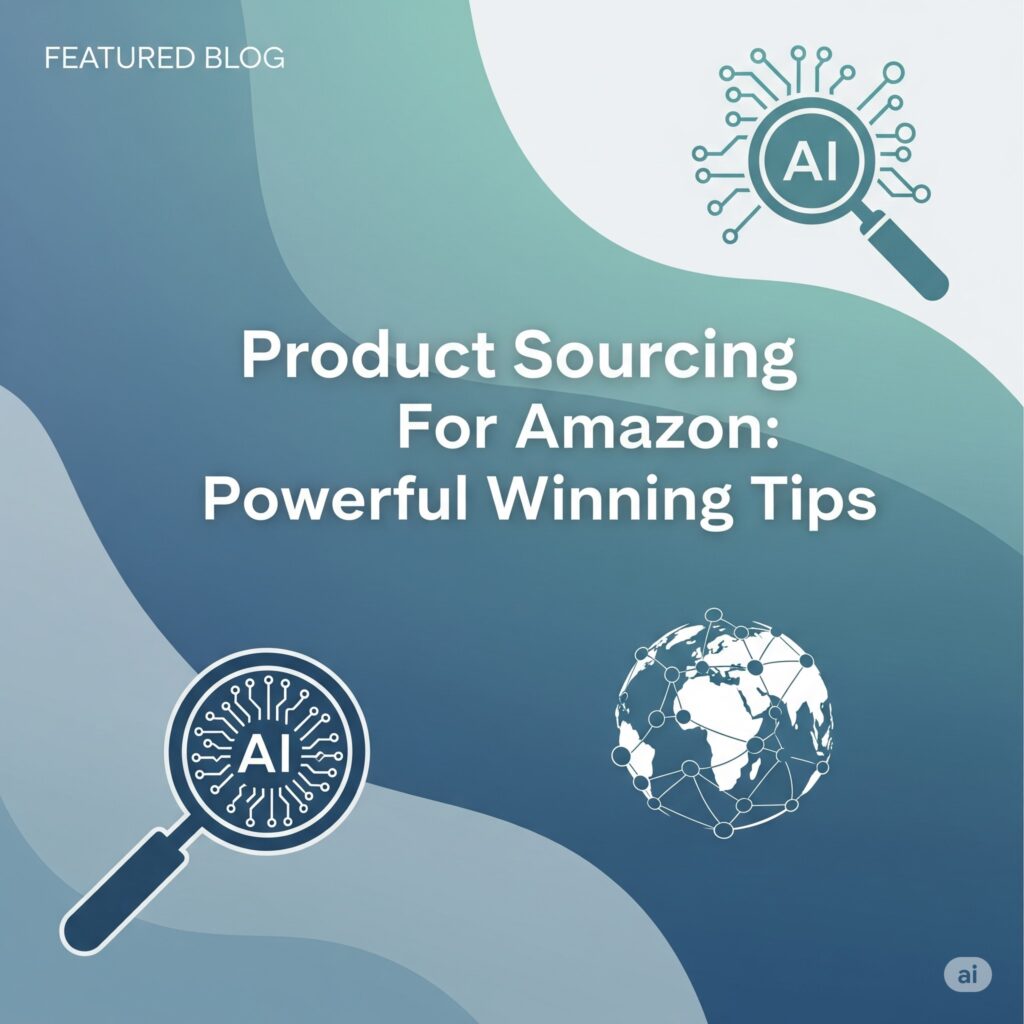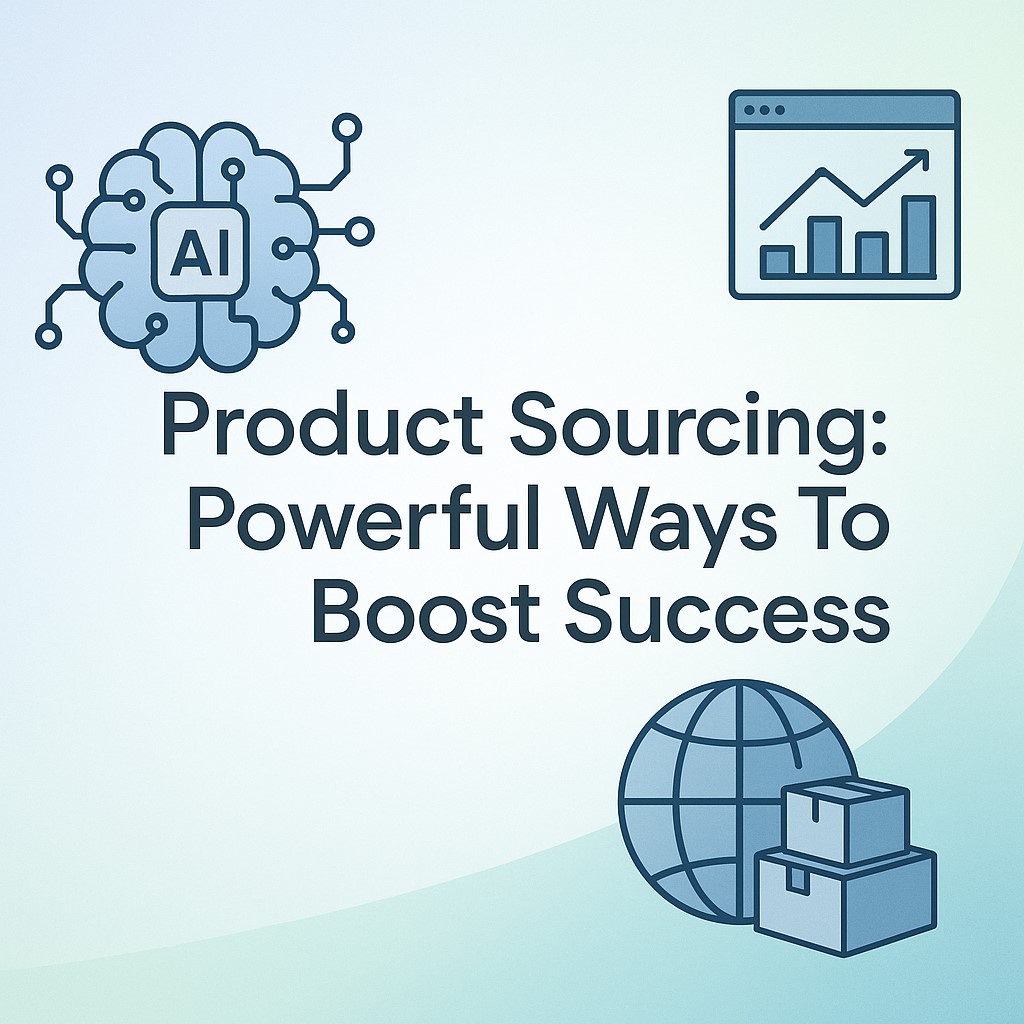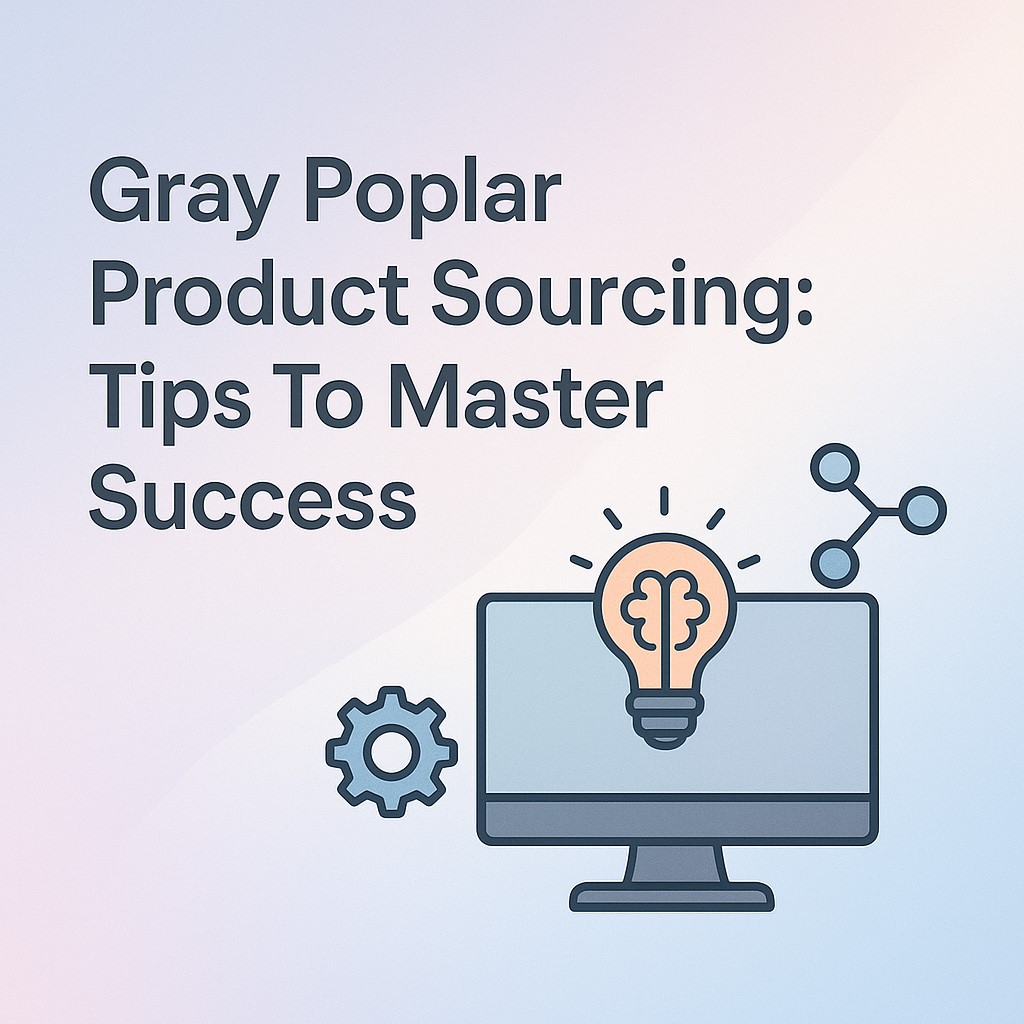Ready to master Product sourcing for Amazon? Learn easy, practical steps to find the best products and suppliers without stress or confusion.
Product Sourcing For Amazon is the process of finding the right products to sell on Amazon’s massive marketplace. It’s one of the first big steps you’ll take as a seller. Without good sourcing, you can’t build a strong brand or keep customers happy.
When you think about Product Sourcing For Amazon, you’re deciding what your store will offer. It’s not just picking random items. You need to choose products people want, at prices they’re willing to pay, from suppliers you trust. This helps you avoid bad reviews and keeps your business growing.
Product Sourcing For Amazon also matters because it affects your profit. If you find quality products at the right cost, you can price them well and compete with other sellers. Good Product Sourcing For Amazon means you know your market, plan ahead, and give shoppers what they actually want. It’s the foundation of your success on Amazon.
Table of contents
- How to start product sourcing for Amazon with AI tools?
- Best countries for product sourcing for Amazon sellers
- Product sourcing for Amazon: wholesale vs private label
- Ethical product sourcing for Amazon FBA explained
- How to find reliable product sourcing for Amazon suppliers?
- How to find reliable product sourcing for Amazon suppliers?
- Negotiating with suppliers for product sourcing for Amazon
- Supplier verification tips for product sourcing for Amazon
- Best AI tools for product sourcing for Amazon sellers
- FAQs: Product sourcing for Amazon
- Conclusion
How to start product sourcing for Amazon with AI tools?
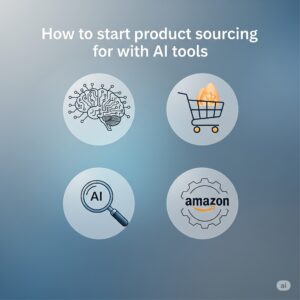
Discover easy ways to use AI for smart sourcing. Product sourcing for Amazon can feel overwhelming at first. But AI tools make it much easier. They help you find suppliers, spot trends, and pick winning products without hours of research.
Understand your sourcing goals
Before using any AI tool, know what you want to achieve. Do you want to find trending products? Compare suppliers? Check prices? Write these goals down. When you have clear goals, you can choose the best AI tools for Product sourcing for Amazon that match your needs.
Choose the right AI tools
Many AI tools focus on Product sourcing for Amazon. Some help you find reliable suppliers with better reviews and faster shipping. Others analyze big data to suggest low-competition products. Tools like Jungle Scout, Helium 10, and Sourcify use AI to save you time. Pick one that fits your budget and goals.
Analyze data for smart decisions
AI tools don’t just find products—they help you understand them. They can predict demand, show keyword trends, and estimate profit margins. When you use these insights, Product sourcing for Amazon becomes smarter and less risky. Check the data carefully so you don’t end up with slow-selling products.
Communicate better with suppliers
Some AI chatbots help you talk to suppliers. They translate messages and even write clear emails. This reduces confusion and helps you negotiate better deals. It’s a big advantage when you’re new to Product sourcing for Amazon and want to build trust with suppliers.
Using AI tools is like having a smart assistant by your side. They make Product sourcing for Amazon simpler, faster, and more accurate. Start small, pick the right tool, and keep learning to stay ahead of the competition.
Best countries for product sourcing for Amazon sellers
Pick the right country for your products. Choosing where to get your products is a big deal. It can change your prices, quality, and how fast things ship. Let’s talk about some of the best countries for product sourcing for Amazon and what makes each one special.
China: cheap and lots of options
China is the top choice for many Amazon sellers. It’s super affordable and has a massive variety of products. You can find anything from clothes to gadgets. Suppliers there know Amazon FBA rules, which makes things easier. Just be sure to check the quality and talk clearly so you get what you want. Product sourcing for Amazon from China is popular because it saves money but needs good communication.
Vietnam: solid quality and fair prices
Vietnam is getting really popular for sourcing. It’s great for clothes, shoes, and small electronics. Prices are decent, and the quality is often better than expected. If you want to stand out, Vietnam can help you avoid selling the same stuff as everyone else. For product sourcing for Amazon, Vietnam is a cool option if you want unique products without spending too much.
India: handmade and unique vibes
India is perfect for sellers looking for something special. Think handmade goods, jewelry, textiles, and leather items. Products have unique designs you don’t find everywhere. Plus, many suppliers speak English well, so talking with them is easier. If you want your product sourcing for Amazon to stand out, India has lots to offer.
Mexico: quick shipping for nearby markets Product sourcing for Amazon
Mexico is great if you sell in the US or Canada. Shipping is faster and cheaper because of trade deals. You can find furniture, car parts, clothes, and even food products. For Amazon sellers who want less waiting and fewer customs headaches, Mexico is a smart choice.
When you pick a country, think about what you want to sell. Always research suppliers, ask questions, and order samples. Taking the time to choose carefully makes product sourcing for Amazon much smoother and helps you succeed.
Product sourcing for Amazon: wholesale vs private label
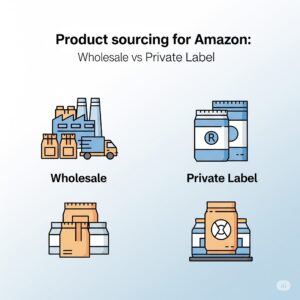
Understand the difference to choose what suits you. When you start product sourcing for Amazon, you’ll hear about two main options: wholesale and private label. Each has its own pros, challenges, and costs. Let’s break them down so you can choose the one that fits you best.
What is wholesale sourcing?
Wholesale means you buy branded products in bulk from a distributor or manufacturer. You don’t create your own brand. You sell items that people already know and trust. It’s simpler because you skip branding and design.
For product sourcing, wholesale is often faster to set up. You can find suppliers quickly and get products ready to sell without much delay. But there’s a catch. You’ll likely face more competition because many sellers offer the same items. Prices can be tight, so your profit margins might be lower.
What is private label sourcing?
Private label is when you create your own branded version of a product. You work with a manufacturer to customize the product, packaging, and logo. It’s your brand, even if the product itself isn’t totally new.
In product sourcing, private label gives you more control. You can set higher prices and stand out from other sellers. But it takes more work. You’ll need to design packaging, talk to suppliers about custom features, and spend more upfront. It’s also riskier if the product doesn’t sell well.
How to choose the right one?
Think about your budget, time, and goals. If you want a quick start with less investment, wholesale might be better. If you want to build your own brand and have room for higher profits, try private label.
Product sourcing is all about finding what works for you. Take time to learn both models, ask suppliers questions, and choose the path that matches your plans. That way, you’ll set yourself up for success from the start.
Ethical product sourcing for Amazon FBA explained
Learn how to make better, kinder choices. Ethical product sourcing for Amazon means thinking about how your products are made and who makes them. It’s not just about profit. It’s about treating people fairly and protecting the environment. Let’s look at how you can make your sourcing more ethical and responsible.
Check your suppliers carefully
Start by finding suppliers who follow fair labor practices. That means no child labor, safe working conditions, and fair pay. Many suppliers will share certifications or audits that prove they meet these standards. When you ask questions and check their records, you make sure your product sourcing doesn’t support unfair treatment.
Look for sustainable materials
Using eco-friendly materials is a big part of ethical sourcing. Ask your supplier if they use recycled, organic, or less harmful materials. This lowers your environmental impact and makes your brand stand out. When you care about sustainability in product sourcing for Amazon, customers notice and appreciate it.
Build honest, long-term partnerships Product sourcing for Amazon
Ethical sourcing is also about trust. Build good relationships with your suppliers. Be clear about what you expect. Pay them on time. This helps them keep up high standards and stay motivated to work with you. For students learning product sourcing for Amazon, remember that good partnerships lead to better products and smoother business.
Choosing ethical sourcing isn’t always the cheapest or easiest path. But it’s the right one. When you care about people and the planet, you build a brand you can be proud of—and one customers trust.
How to find reliable product sourcing for Amazon suppliers?
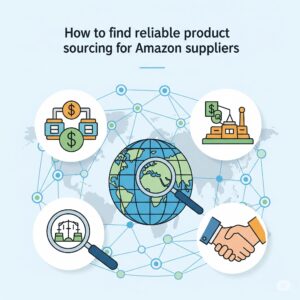
Simple steps to choose the right supplier. Finding a good supplier is key to successful product sourcing for Amazon. You want someone you can trust to deliver quality products on time. Let’s look at how you can spot the reliable ones without getting lost or scammed.
Research and compare suppliers
Start by making a list of potential suppliers. Use trusted platforms like Alibaba, Global Sources, or IndiaMART. Check their ratings, reviews, and years in business. Don’t just pick the first one you see. Comparing a few options helps you see who offers better prices, quality, and service for your product sourcing for Amazon needs.
Ask the right questions
Once you shortlist suppliers, talk to them directly. Ask about minimum order quantities, production times, payment terms, and shipping options. A good supplier will answer clearly and quickly. For product sourcing for Amazon, clear communication avoids surprises later. Don’t be shy—good questions save you trouble.
Verify their credentials and get samples Product sourcing for Amazon
Always ask for certifications or business licenses. These prove the supplier is legit. It’s also smart to order samples before making a big purchase. This way, you can check the quality yourself. When you take time to verify and test, you make product sourcing for Amazon safer and more reliable.
Finding the right supplier takes effort, but it’s worth it. A reliable partner makes your Amazon journey smoother and helps you deliver great products to happy customers.
How to find reliable product sourcing for Amazon suppliers?
Simple steps to pick suppliers you can trust. Finding good suppliers is a big part of product sourcing for Amazon. The right partner makes everything easier, from getting quality products to shipping them on time. Here’s how you can find reliable suppliers without feeling stressed.
Use trusted platforms
Start by searching on websites known for safe sourcing. Sites like Alibaba, Global Sources, and ThomasNet list verified suppliers. Look for profiles with good ratings, clear contact info, and lots of product photos. This helps you feel more confident when you begin product sourcing for Amazon with someone new.
Check reviews and references
Don’t just trust a nice-looking website. Read reviews from other sellers. Ask the supplier for references you can contact. When you hear from real customers, you learn if the supplier delivers good products and meets deadlines. Reliable product sourcing for Amazon means doing this homework every time.
Ask the right questions
Before you order, ask clear questions. How long does production take? What are the minimum order quantities? Do they offer samples? A good supplier will answer fast and give honest details. If someone avoids your questions or seems unsure, that’s a red flag.
Request samples before buying big Product sourcing for Amazon
Always get a sample. This is the best way to check quality. You can see how the product feels, test it, and decide if it matches your standards. If the sample isn’t good, move on to another supplier. Sampling saves you from expensive mistakes later.
Finding the right suppliers takes time, but it’s worth it. When you follow these steps, product sourcing for Amazon feels less risky and way more rewarding. Keep learning and stay careful, and you’ll build strong partnerships that help your business grow.
Negotiating with suppliers for product sourcing for Amazon

Learn easy ways to get better deals and build trust. Negotiating is a big part of product sourcing. It’s not just about lowering prices. It’s about finding an agreement that works for both you and your supplier. Let’s look at simple tips to help you negotiate with confidence.
Be clear about what you want
Start by knowing exactly what you need. How many units? What quality? What price range? When you’re clear, you can explain it simply to the supplier. This avoids confusion and shows you’re serious about product sourcing for Amazon. Suppliers respect clear communication and will take you more seriously.
Build a friendly relationship
Don’t treat negotiation like a fight. Be polite and friendly. Ask questions about their production time and costs. Show interest in how they work. When you build trust, suppliers are more willing to offer better prices or flexible terms. For product sourcing for Amazon, a good relationship can mean faster shipping and better quality control down the road.
Ask for better terms, not just price
Price is important, but it’s not the only thing you can negotiate. Ask about payment terms, shipping options, or even free samples. Sometimes suppliers can’t lower the price much but can give you better overall value. This makes your product sourcing for Amazon more affordable and less stressful.
Don’t rush your decision
Take your time to compare offers from different suppliers. Let them know you’re talking to others. This can motivate them to give you their best deal. If someone pressures you to decide fast, be careful. A good supplier will give you time to think.
Negotiating might feel scary at first, but it’s a skill you can learn. Be polite, clear, and patient. With practice, you’ll get better deals and build strong partnerships that make product sourcing for Amazon much easier and more rewarding.
Supplier verification tips for product sourcing for Amazon
Make sure you choose trustworthy suppliers. Verifying suppliers is a big step in product sourcing. You don’t want to lose money on scams or get stuck with low-quality products. Let’s look at some easy, practical ways to check if a supplier is reliable.
Research their background
Start by checking their business license and company history. Many platforms show verified badges or certifications. Ask for these documents if you don’t see them. When you’re doing product sourcing, you need to know the supplier is real and has experience delivering quality products.
Read reviews and ask for references
Don’t just trust what the supplier says. Look at reviews from other buyers on sourcing platforms. See if people mention good communication, quality products, and on-time shipping. You can also ask the supplier for references—other customers you can talk to. This helps you avoid surprises in product sourcing for Amazon.
Order samples and inspect them
Always ask for a sample before placing a big order. This is the best way to see the product quality for yourself. Check the materials, packaging, and any custom branding. If they can’t or won’t send a sample, consider it a warning sign. Smart product sourcing for Amazon means testing first so you know exactly what you’re buying.
Communicate clearly and often
Talk regularly with your supplier. Ask detailed questions about production times, materials, and shipping. A trustworthy supplier will answer clearly and quickly. If they avoid questions or reply with confusing answers, think twice. Good communication is a key part of reliable product sourcing for Amazon.
When you take time to verify suppliers, you reduce risks and avoid big headaches later. It might seem like extra work now, but it sets you up for success and helps you build a strong business you can be proud of.
Best AI tools for product sourcing for Amazon sellers
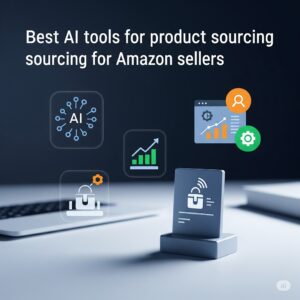
Use smart tools to make sourcing faster and easier. AI tools can save you time, money, and stress when you’re doing product sourcing for Amazon. They help you find trending products, analyze data, and even connect with suppliers. Let’s look at some of the best tools that Amazon sellers use right now.
Jungle Scout: all-in-one product research tool
Jungle Scout is a favorite for Amazon sellers. It uses AI to find high-demand, low-competition products. You can check sales estimates, track trends, and filter results based on profit margins. For product sourcing for Amazon, this tool makes it easy to find winning products without guessing.
Helium 10: smart keyword and market insights
Helium 10 offers more than just keyword tools. It helps you spot what people are searching for, analyze competitors, and even manage your listings. If you’re serious about product sourcing for Amazon, Helium 10 can guide your choices based on real-time data.
Sourcify: connect with trusted manufacturers
Sourcify uses AI to match you with reliable factories and suppliers. It’s great for finding private label options and managing orders in one place. You don’t need to know everything about factories—Sourcify handles the hard parts for you. This makes product sourcing for Amazon much smoother, especially if you’re new.
Algopix: market research made simple
Algopix is great for checking if a product idea will actually sell. It gives you pricing suggestions, demand levels, and even competition info. With AI-backed insights, you’ll know if a product is worth sourcing before spending money on it.
Using these AI tools doesn’t just save time—it gives you confidence. When you know what’s trending and who to work with, product sourcing for Amazon becomes less risky and way more fun. Start with one tool, learn it well, and build from there.
FAQs: Product sourcing for Amazon
What is product sourcing for Amazon?
Product sourcing for Amazon means finding and buying products you want to sell on Amazon. You choose items, find suppliers, and make sure they meet your quality standards. It’s the first big step in starting your Amazon business.
How do I start product sourcing for Amazon with no experience?
Start small. Pick one product you know well. Research suppliers on trusted sites like Alibaba or Global Sources. Ask questions and request samples. When you learn one step at a time, product sourcing for Amazon feels less scary and more fun.
How can I avoid scams when sourcing products?
Always verify suppliers before paying. Check business licenses and reviews. Ask for references. Use secure payment methods. Good product sourcing for Amazon means doing your homework so you don’t lose money to scams.
Should I buy in bulk for product sourcing?
Buying in bulk often lowers costs. But start with small orders if you’re new. Test quality and see if it sells. Once you’re confident, you can increase order sizes. That’s smart product sourcing for Amazon that avoids big mistakes.
How do I know if a product will sell on Amazon?
Check demand using Amazon’s Best Seller Rank and keyword tools. Look at reviews to see what customers want. Study competitors’ prices. This research helps you choose products that sell and makes product sourcing for Amazon more successful.
Can I source products locally instead of overseas?
Yes! Local sourcing can mean faster shipping and easier communication. You might find unique products not sold by many competitors. It’s a great option for product sourcing for Amazon if you want to support local businesses and reduce shipping headaches.
Conclusion
Product sourcing for Amazon doesn’t have to feel overwhelming. Take small steps, do your research, and choose suppliers you trust.
When you use smart tools and clear communication, product sourcing for Amazon becomes easier and more rewarding. You’ll save time, avoid mistakes, and build a strong foundation for your business.
Remember, product sourcing for Amazon is your chance to stand out. Pick quality products, think about what buyers want, and stay curious.
With the right approach, product sourcing for Amazon can help you grow your brand and reach more customers than you ever imagined. Keep learning and stay brave.

